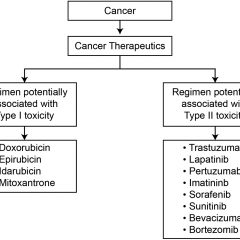September 2014
Expert Consensus for Multimodality Imaging Evaluation of Adult Patients during and after Cancer Therapy: A Report from the American Society of Echocardiography and the European Association of Cardiovascular Imaging
Expert Consensus for Multimodality Imaging Evaluation of Adult Patients during and after Cancer Therapy: A Report from the American Society of Echocardiography and the European Association of Cardiovascular Imaging

Cardiac dysfunction resulting from exposure to cancer therapeutics was first recognized in the 1960s, with the widespread introduction of anthracyclines into the oncologic therapeutic armamentarium. Heart failure (HF) associated with anthracyclines was then recognized as an important side effect. As a result, physicians learned to limit their doses to avoid cardiac dysfunction. Several strategies have been used over the past decades to detect it. Two of them evolved over time to be very useful: endomyocardial biopsies and monitoring of left ventricular (LV) ejection fraction (LVEF) by cardiac imaging. Examination of endomyocardial biopsies proved to be the most sensitive and specific parameter for the identification of anthracycline-induced LV dysfunction and became the gold standard in the 1970s. However, the interest in endomyocardial biopsy has diminished over time because of the reduction in the cumulative dosages used to treat malignancies, the invasive nature of the procedure, and the remarkable progress made in noninvasive cardiac imaging. The noninvasive evaluation of LVEF has gained importance, and notwithstanding the limitations of the techniques used for its calculation, has emerged as the most widely used strategy for monitoring the changes in cardiac function, both during and after the administration of potentially cardiotoxic cancer treatment. The timing of LV dysfunction can vary among agents. In the case of anthracyclines, the damage occurs immediately after the exposure6 ; for others, the time frame between drug administration and detectable cardiac dysfunction appears to be more variable. Nevertheless, the heart has significant cardiac reserve, and the expression of damage in the form of alterations in systolic or diastolic parameters may not be overt until a substantial amount of cardiac reserve has been exhausted. Thus, cardiac damage may not become apparent until years or even decades after receiving the cardiotoxic treatment. This is particularly applicable to adult survivors of childhood cancers. Not all cancer treatments affect the heart in the same way. Therefore these agents cannot be viewed as a single class of drugs.
Chair(s)
- Plana, Juan Carlos
- Galderisi, Maurizio
